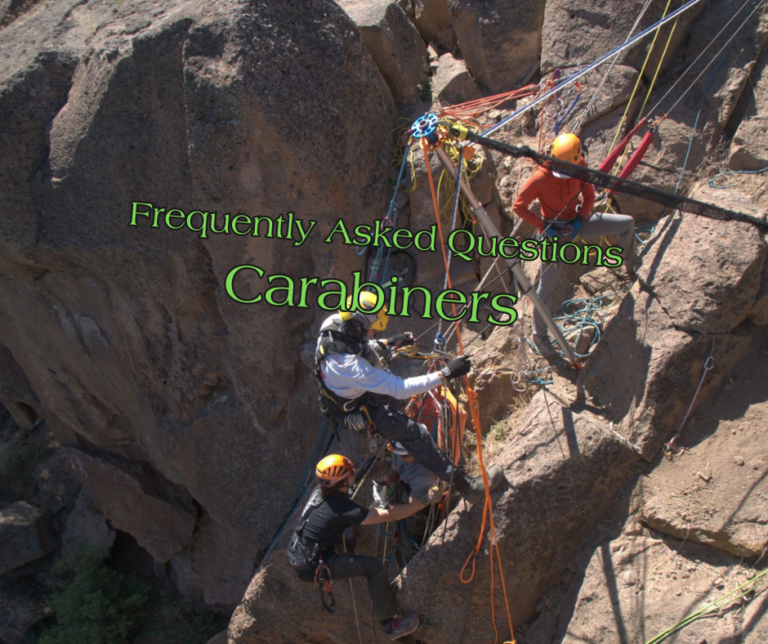Carabiners, essential in climbing and rescue operations, are specifically designed to bear loads along their major axis, typically down the spine in “D” shaped designs. This load distribution ensures maximum strength and safety. Certain devices, like the Petzl ASAP, require oval carabiners to prevent binding due to their broader major axis loading capabilities. Despite not being intended for side loading, the minor axis or gate of a carabiner must still be robust enough to handle unexpected forces, reflecting the stringent manufacturing standards for rescue-grade carabiners. When comparing steel and aluminum carabiners, the trade-off between weight and strength becomes apparent. Steel carabiners offer greater durability and resistance to forces, suited for environments where strength is paramount. In contrast, aluminum carabiners provide a lightweight option for applications where carrying less weight is beneficial, although advancements in technology are narrowing these differences, making material choice more about specific needs than ever before.
Q: How are carabiners designed to be loaded?
Carabiners are designed to be loaded on their major axis. The definition of “major axis” will vary based on the carabiner’s shape and design. For example, the major axis of a “D” shaped carabiner is down the spine of the carabiner.
Some devices, such as the Petzl ASAP, can only be used in conjunction with an oval carabiner. This is because a wider loading of the major axis is possible with an oval carabiner, and there is less potential for binding.
Q: How strong does the gate (minor axis) of a carabiner need to be if the gate is not designed to be side loaded in the first place?
A: The carabiner’s gate needs to be strong enough to withstand the carabiner being loaded on its side. This is because the carabiner could potentially be subject to unexpected forces that could cause the gate to fail. As such, carabiners used in rescue operations are manufactured to a higher standard than those used for other purposes. Additionally, the rigging of rope rescue systems takes into account the potential for carabiners to be subject to side loading, in order to ensure a margin of safety.
The carabiner still needs to be fairly strong, because even though it’s not designed to be side loaded, there is always the possibility that it could become side loaded in a fall or other accident. The latest ANSI 359 version requires a 3,600 lbf (15.88 kN) minor axis rating for fall arrest carabiners, while NFPA 1983 requires a 7 kN (1574 lbf) minor axis rating for technical use carabiners, and an 11 kN (2473 lbf) rating for general use carabiners. So, even though the carabiner’s gate may not be designed to be side loaded, it still needs to be strong enough to withstand the force if it were to become side loaded.
Q: What are the pros and cons when comparing steel carabiners with aluminum carabiners?
When it comes to carabiners, there are two main types on the market: steel and aluminum. The obvious difference between the two is weight. Steel carabiners are generally heavier than aluminum carabiners, making them less ideal for applications where weight is a factor, such as mountain rescue or tower rescue. However, steel carabiners are generally stronger and more durable than aluminum carabiners, making them a better choice for applications where strength and durability are important.
All that said, other than environment conditions (atmosphere and chemical), there is becoming less and less reasons to use steel carabiners or connectors. Technology has made leaps and bounds improvements in strength and weight.
When it comes to carabiners, steel carabiners are typically stronger than aluminum carabiners. Steel carabiners can have a tensile strength of up to 70 kN, while aluminum carabiners typically have a tensile strength of 36 kN. However, steel carabiners are also much heavier than aluminum carabiners, which can be a disadvantage if you are looking for a carabiner that is easy to carry. Additionally, steel carabiners may rust over time, while aluminum carabiners will not.
YOUR PERSONAL AND TEAM RESCUE AND RIGGING LEARNING CENTER
Peace on your Days
Lance










